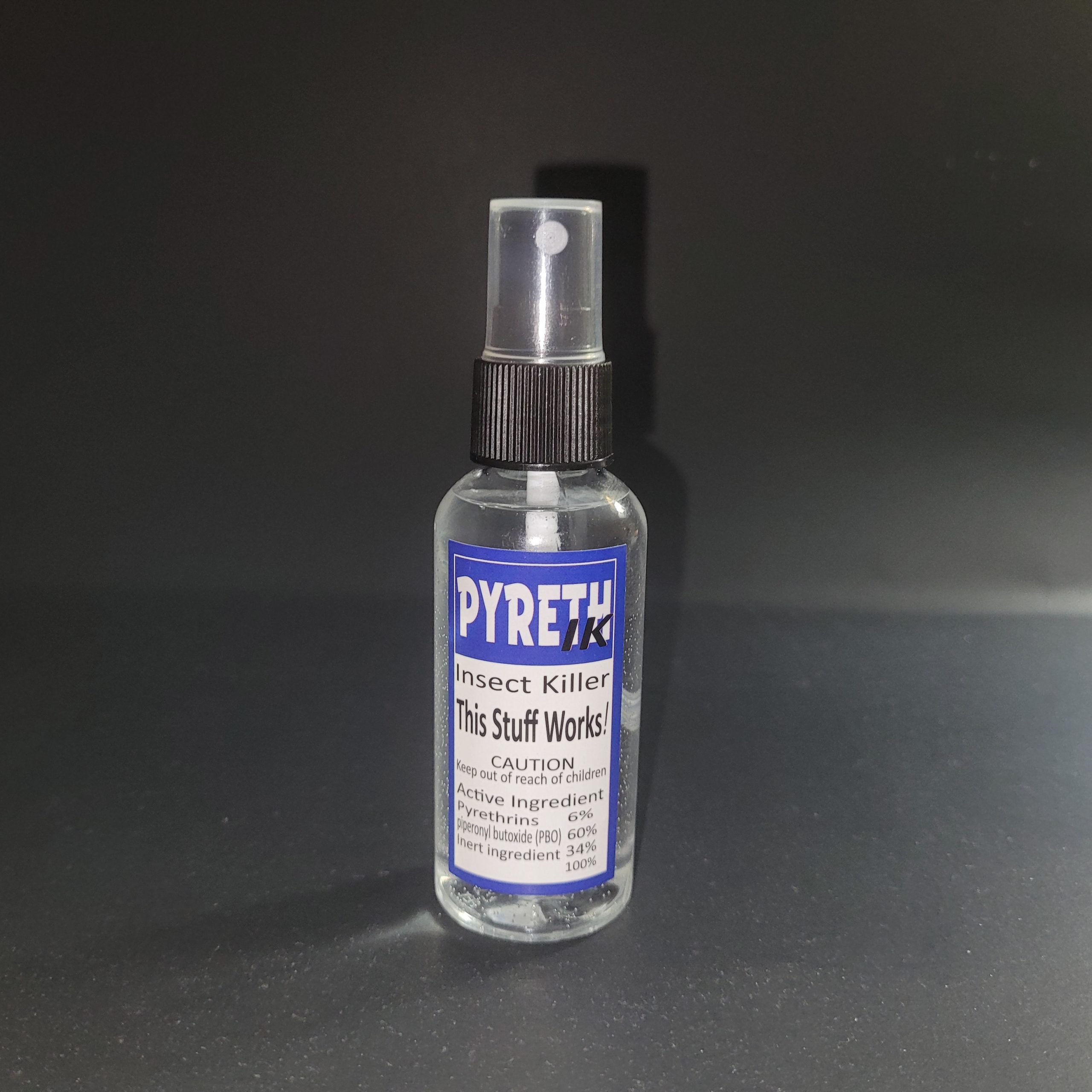
Insect Killer
This Stuff Works!

Pyrethroids: A Powerful Ally in Pest Control
In the ongoing struggle against household pests, pyrethroids have become a key player in safeguarding our homes and health. As synthetic chemicals, they’ve revolutionized pest management by offering effective solutions against a diverse range of insects. This comprehensive guide delves into the world of pyrethroids, exploring their composition, mode of action, and the variety of household bugs they combat.
Understanding Pyrethroids
Derived from natural pyrethrins found in chrysanthemum flowers, pyrethroids have been pivotal in pest control since their mid-20th-century development. They replicate pyrethrins’ insecticidal properties but with enhanced stability and longevity.
Mechanism of Action
Pyret targets the nervous systems of insects through the following steps:
- Nervous System Disruption: They interfere with the normal functioning of insect nerve cells, particularly targeting voltage-gated sodium channels.
- Sodium Channel Activation: Pyrethroids bind to these channels, causing them to remain open and allowing continuous sodium ion influx.
- Prolonged Excitation: This results in overexcitations of nerve cells, leading to continuous, uncontrollable nerve impulses.
- Paralysis and Death: The sustained nerve activity causes paralysis and eventually death, often preceded by symptoms like tremors and convulsions.
Types of Household Bugs Targeted by Pyrethroids
Pyreth is effective against a wide range of pests, including:
- Crawling Insects: Ants, cockroaches, spiders, silverfish, earwigs, and bedbugs.
- Flying Insects: Mosquitoes, flies, and moths.
- Biting and Stinging Insects: Ticks, fleas, wasps, and bees.
- Agricultural Pests: Aphids, whiteflies, caterpillars, and leafhoppers.
- Termites: Used in some termite control strategies.
Environmental Impact
While pyrethroids are effective, they pose environmental risks, particularly to aquatic life. Responsible use and adherence to label instructions are crucial. They can also impact beneficial insects, leading to a preference for integrated pest management (IPM) approaches.
Bedbugs: A Persistent Challenge
Bedbugs (Cimex lectularius) are a major target of pyrethroids. These small, nocturnal insects feed on blood and are known for infesting bedding and sleeping areas.
Biology and Behavior
- Physical Characteristics: Adult bedbugs are apple seed-sized, flat, and oval. They turn redder after feeding.
- Life Stages: They progress through eggs, nymphs, and adult stages.
- Feeding Habits: Bedbugs feed on blood, usually at night.
- Hiding Places: They hide in mattress seams, headboards, and furniture joints.
- Reproduction: Females lay hundreds of eggs, which hatch in about a week.
Signs of Infestation
- Bite Marks: Itchy, red marks on the skin.
- Blood Stains: Small stains on bedding from crushed bedbugs.
- Fecal Stains: Dark spots on bedding and furniture.
- Shed Skins: Found near hiding places.
Prevention and Eradication
- Inspect Second-Hand Items: Check for bedbugs in used furniture and clothing.
- Regular Cleaning: Vacuum and clean regularly, focusing on potential hiding spots.
- Mattress Covers: Use bedbug-proof covers.
- Reduce Clutter: Minimize hiding places.
- Travel Precautions: Inspect hotel rooms and luggage.
Professional and DIY Control
- Professional Pest Control: Often necessary for severe infestations.
- DIY Insecticides: Use bedbug-specific insecticides cautiously.
- Heat Treatment: Effective at high temperatures.
- Mattress and Furniture Disposal: Sometimes required for severe infestations.
- Washing and Drying: Launder infested items in hot water.
Challenges
Bedbugs are tough to eradicate due to their resistance to some insecticides and ability to hide in small spaces. Persistence and thoroughness are key in elimination efforts.
In summary, pyrethroids are a vital tool in controlling a wide array of household pests, including bedbugs. Their effectiveness, combined with responsible usage, makes them a cornerstone of modern pest management strategies.
Pyrethroids, a class of synthetic insecticides, are known for their effectiveness against a wide range of insect pests. Here are a small range bugs against which pyreth is commonly used:
- Mosquitoes
- Fleas
- Flies
- Moths
- Ants
- Cockroaches
- Ticks
- Bedbugs
- Spiders
- Silverfish
- Earwigs
- Wasps
- Bees
- Aphids
- Whiteflies
- Caterpillars
- Leafhoppers
- Termites
- Carpet Beetles
- Weevils
- Centipedes
- Millipedes
- Scorpions
- Pill Bugs (Roly-Polies)
- Asian Lady Beetles
- Boxelder Bugs
- Stink Bugs
- Springtails
- Leaf Miners
- Scales
- Mealybugs
- Thrips
- Lace Bugs
- Psyllids
- Psocids (Booklice)
- Leaf Beetles
- Colorado Potato Beetles
- Squash Bugs
- Tomato Hornworms
- Gypsy Moths
- Mexican Bean Beetles
- Bagworms
- Japanese Beetles
- Wireworms
- Codling Moths
- Pine Beetles
- Flea Beetles
- Leafhopper Treehoppers
- Tobacco Hornworms
- Elm Leaf Beetles
